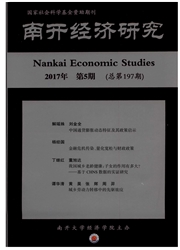

 中文摘要:
中文摘要:
本文经验考察了中国2001-2009年中国市场获得(MA)的区域分布,发现东部区域具有外部导向型的MA结构,而内陆省份更倾向于本土导向的需求空间。实证发现国际市场获得(FMA)的贡献程度高于国内DMA,且内陆省份FMA的重要性则低于东部;FMA对增长的边际贡献率在下降;获取要素市场潜力比获得最终品市场潜力更能刺激经济增长,但前者的贡献弹性再下降;政策意义在于,中国应由早期的外需导向为主,逐渐转型为“内外需并重”甚至“内需主导型”的自主发展模式;利用要素集约化模式替代粗放模式,挖掘要素市场的发展空间。
 英文摘要:
英文摘要:
This paper investigates the regional distribution of China's market Access (MA) at the provincial level during 2001-2009, and has found that the MA structure in the eastern provinces tends to be external-oriented, while it is localized in inland provinces. The empirical result shows that contribution of the foreign market Access (FMA) is higher than that of domestic MA, and the importance of FMA in the inland provinces is lower than it in the eastern. FMA shows a declining marginal contribution to economic growth. Compared with supplier market potential, access to final goods market potential can stimulate economic growth much more. Policy suggestion has been focused on demand transition, for which the oriented-demand mode need be changed to a mode considering the balance of domestic and external demand. In order to enlarge the market development space, China should use intensively its resources, instead of wasting production material.
 同期刊论文项目
同期刊论文项目
 同项目期刊论文
同项目期刊论文
 期刊信息
期刊信息
